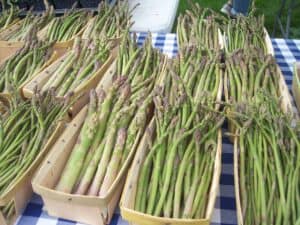
By Jennifer Fairfield, owner of the Garden Mill
(Publisher’s note: Part 1 published yesterday.)
Flowers:
If you haven’t yet, it really is time to pull out any left-over summer annuals. They’re not going to last through the freezing temps the next few nights, unless you have the ability to bring them inside – but even that won’t make them last a whole lot longer, as our daytime temperatures are going to get to get to be too cold for them soon, too. Compost them, as long as they are not showing any signs of disease.
Once you’ve emptied out containers, store them somewhere where they will be out of the weather for the winter. You can leave them outside over the winter, if you take some precautions to keep them from filling up with water, freezing, and cracking – but they will last longer if they are moved into a shed or garage, where they can be out of the weather altogether. Cover them with tarps if they’re too big to move.
Most potted mums are pretty well finished now too and can be composted.
Just as with the veggie garden, remove weeds from your flower beds to give you a head-start on next spring.
Once the soil has cooled down, add a layer of fresh mulch to your perennial flower beds to help protect the plants’ roots from frost heave this winter.
Plant spring-blooming bulbs now. Alliums, crocus, daffodils, hyacinths, muscari, and tulips can be planted all the way up until the ground is frozen, but doing it now gives them a chance to get some good root growth going while the soil still has some warmth. It also means it might be warmer for you, so you aren’t freezing while you’re out there planting. (Check out our great selection of bulbs on our website, or in-store.)
If you’ve had problems with creatures digging up your tulip bulbs in the past, try mixing them up with some baby powder in a bag (think “Shake-n-Bake”) before you plant them. Squirrels and such don’t like the smell of baby powder, so it might deter them.
There are many other ways to deter critters from digging up your bulbs – including planting bulbs they are less likely to bother, like alliums and daffodils. But if you really love the look of tulips (and who doesn’t?!), here’s a good resource for finding ways to outsmart the critters.
Trees and Shrubs:
The only pruning of trees and shrubs that should be done between now and about February is to remove dead or damaged branches. Resist the temptation of trimming back unruly stuff at this time of year, as it can cause more problems than it will solve. Make a note on your calendar of what you want to clean up – for sometime in February or early March.
While the ground is still soft, put up stakes that you’ll use to attach burlap to for wind barriers around evergreen trees and shrubs. You can wait a little bit to put the burlap up, but having the stakes in place now means you aren’t trying to pound them into the frozen ground.
Evergreens, as well as deciduous trees and shrubs, will do better with some protection from a number of things they can encounter in the cold months.
The University of Minnesota Extension Service offers a really great resource for information on what issues trees and shrubs may face over the winter, and how to deal with them. While Minnesota’s winter environment tends to be a bit harsher than ours, the information in this article still applies to our trees.
One of the things I usually recommend at this time of year is to keep your hoses handy so that you can water newly planted trees and shrubs all the way up until the ground freezes, as moist soil is one of the best ways to help them get through the winter. I’m not so worried about that this fall – we’ve had quite a bit of rain so far.
Do keep any eye on the weather though, as we head toward winter. If we don’t continue to get regular rain between now and when the ground freezes, you will want to make sure to give your trees and shrubs a good drink on a regular basis.
As with your flower beds, adding a layer of fresh mulch to trees and shrubs is important to help them get through the winter.
Lawn and Leaves:
Lawns are probably just about done growing for the season, with the onset of colder temperatures. If you haven’t mowed recently though, you might want to do one final mow before you put away the equipment. It’s not a good idea to leave the grass too long going into winter, as this can promote disease in your lawn.
It’s also not a great idea to leave whole leaves on your lawn all winter long. So, while you’re doing that last mowing, use your mower to shred the leaves and mulch them into the lawn, instead of raking them up – it’s better for your lawn, and for your back.
If you have leaves in your garden beds, leave them – they make a good mulch, and they might be providing shelter for an over-wintering beneficial insect.
Tools:
When you’re all done with your garden clean-up, there’s still a little bit more to be done: clean, dry, sharpen, and lubricate your garden tools before you put them away so they’ll be ready to get right to work in the spring. Sharpen your shovels, too. A sharp shovel makes digging so much easier.
Empty your hoses, roll them up, and tie them before hanging them up for the winter. I like to connect the ends of each hose to keep spiders from using them as nesting places. I also like to put my sprinkler heads and wands all in one place, so I don’t have to remember what I did with them come spring.
A small trug (one of my favorite garden tools) or bucket works well for this. If you have rain barrels, empty them and put them away, too, or consider bringing one or more of them into your basement to use the rain water over the winter. It’s not an easy task – you’ll need some real muscle and, at minimum, a hand truck, but if you can do it, it’s a great way to save water, and using rain water – as opposed to treated water – is much better for your plants.
Here are more great tips on taking care of your tools at the end of the season.
Birds:
Leave your birdbaths out and filled as long as possible. Many birdbaths can’t take being out in freezing temperatures, but you can still fill your birdbaths up during the day, and dump them out in the evening, until daytime temps start going below freezing.
If you have a birdbath that can stand up to the freezing temps, consider putting in a de-icer. De-icers allow you to provide a vital source of water for your birds all through the winter, without risking damaging your birdbath.
Another option is a heated birdbath, like the one we carry, that has a built-in heater with temperature control that only heats up when the temps dip below freezing.
If you don’t feed your birds year-round, from now to next spring is the best time to do so. While birds rely mainly on insects during the summer, seeds and berries become the main source of food in the winter for most birds.
Providing an easy source of food for them will help them get through the cold days and nights of winter, and lets you enjoy their antics at the feeders, too. Just remember to clean the feeders regularly to help prevent the spread of disease.

















